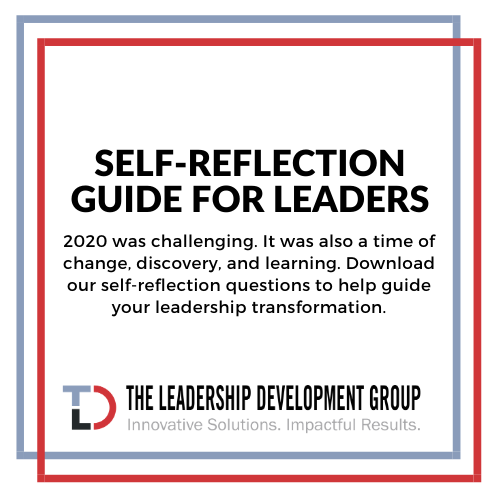Last November, three professional healthcare associations co-wrote and published an open letter to the American public. In the letter, the AHA, the ANA and AMA pleaded with us to follow recommended COVID-19 infection control protocols. Back then, eight months into our pandemic, the associations expressed what many of us across the health ecosystem felt and feel: “We are all weary,” they wrote.
Now, one month into the New Year, what to do about this “weariness?” As part of our work in healthcare leadership, how do we inspire or re-inspire hope, trust, collaboration and a shared sense of mission—all while making our strategic plans happen?
Balancing Empathy with Action
From the C-suite to the home office, from the laboratory to the hospital bedside, 2020 forced many of us to make swift decisions and emergency changes. We had no choice. However, 2021 may call for a more thoughtful and empathetic leadership approach.
In her short explainer video (15,666,767 views on YouTube), “Empathy vs. Sympathy,” research professor and New York Times bestselling author Brené Brown defines empathy as “feeling with people.” Unlike top-down sympathy, empathy fuels real connection, while challenging us to take the risk of being vulnerable.
In our workplaces, empathy requires the emotional intelligence to inquire, to listen and to commit to building and sustaining a work culture where everyone feels psychologically safe.
Also, empathy and emotional intelligence make for sound business practice. According to this “Harvard Business Review” report, “empathic workplaces tend to enjoy stronger collaboration, less stress, and greater morale, and their employees bounce back more quickly from difficult moments such as layoffs.”
No arguments here. However, there are still tomorrow’s planned or emergent needs. There’s still that strategic plan to implement and oversee. There are still those key performance indicators (KPIs) to meet.
So how to balance empathy with effectiveness? How to find that sweet spot between what business psychologist Dr. Merete Wedell-Wedellsborg calls compassion and containment?
In her December 2020 Harvard Business Review article, “How to Lead When Your Team is Exhausted,” Wedell-Wedellsborg defines “containment” as the ability to “observe and absorb what is going on around you, but to provide a sense of stability.”
Now more than ever before in healthcare leadership, our teams may need us to be empathetic and effective and, when needed, directive.
Leading for a Diverse and Inclusive Workplace
Many of us used a “we’re all in this together” ethos to get us through the first weeks of the pandemic. As we faced all the challenges and changes, we needed to believe in and foster a sense of a shared and equal struggle.
However, by early summer, it was clear that we and our families were not equally impacted. Instead, the coronavirus’s disproportionate impact on lower-income communities and persons of color—including our frontline health workers--had laid bare an age-old reality: As America and our service areas grow more diverse, American healthcare has a diversity problem.
For example, only 5% of American doctors are African American. According to “Modern Healthcare,” women represent 75% of the healthcare workforce, but only 26% of hospital CEOs. Meanwhile, among the largest payer groups, only 24% of company leaders are from traditionally underrepresented groups. The rate is even lower (7.7%) among pharmaceutical company leaders.
“There is a need for creating inclusive initiatives and an environment where employees feel valued, supported and connected,” says Binwa Sethi, Senior Consultant at TLD Group.
Good news: According to Sethi, more companies are meeting that need by investing in and implementing diversity and inclusion (D & I) initiatives, including talent recruitment and development, as well as how leaders address employees’ physical and mental health needs.
Talk the Talk: Better Communication with Your Team.
A recent article on crisis communications in “Chief Executive” advocates for fact-based, customized and inclusive messaging to build a sense of shared mission and employee trust.
Yet, ask any team director: Someone always misses the message.
So why do our otherwise productive and engaged team members miss or fail to respond to key information?
Often, it’s a fallout of the communications content itself and how we disseminate messaging to our teams.
Survey your team members—either in person, online, in one-on-one conversations—or all three. Be sure to include open-ended questions which will reveal the where, how and when of how your team members access key information.
Also, plan to segment, specialize and cascade your messaging according to each sub-group’s specific and reported needs. For example, in addition to all-team messages, craft and schedule a short, consistent message for your mid-level managers only. Be clear about next steps and what your managers need to do with that message from you.
Now, about those communications glitches or log-jams. If this is a persistent problem, consider engaging an outside consultant to audit your current strategy, seek employee input and to implement a new approach. Two baseline must-haves: (1) Ensure that everyone on your team knows where to find crucial, all-company announcements such as health and safety updates (including vaccination requirements and scheduling), crisis communications, disaster-or weather-related closures, and other mission-critical messaging and (2) Encourage and facilitate inclusive, bi-directional communications in which your team feels empowered and comfortable enough to ask you questions and give feedback.
Building Capacity for 2021
For all its human and fiscal losses, 2020 forced many of us to find quick solutions for unprecedented and emergent needs. Now, how many of those stopgap initiatives have turned out to be a new fix for an old problem? Are your newly shuffled or interdisciplinary teams out-performing the old structures? Which of your 2020 workaround solutions have inspired sound and sustainable approaches that can be replicated across departments or retained into the future? Or, as this MIT Sloan Executive Education blog contributor asks: “Are you and your company ready for the future of work?”
What material investments and strategic relationships will you need to sustain your new and improved normal? In terms of talent development, which team members or directors met last year’s changes or crises with ingenuity, steadfastness and kindness?
As you build capacity for 2021, prepare to invest in your higher performing employees who can be coached to become dynamic, high-performing managers.
Leader, Know Thyself!
For many of us, change or crisis management was the name of last year’s survival game. Now, however, it may be time for a more self-reflective, authentic model of leadership. And that model, that path to authenticity, begins by looking in the mirror.
In our TLD Group article, “Leading Authentically,” we define the twin cornerstones of authentic leadership: emotional intelligence and self-awareness.
“To be an authentic leader, it is important to be emotionally balanced and in control, and to know one’s own strengths and limitations,” writes Tracy Duberman, PhD, TLD Group’s Founder and President.
It’s also important to be ready and able to learn from our past mistakes.
What were your biggest and best mistakes? Now, how will you turn those best bloopers into valuable learning opportunities?
Also, as you work to build a more inclusive workplace, what are your own unconscious biases? How will you transcend those biases? How comfortable have you been with change and risk? Knowing your own blind spots or skill deficits is the first step to working on the personal changes that will make you an exemplary leader.
Conclusion
Like every new year, 2021 holds many uncertainties and unknowns. But we do know this: Effective healthcare leadership is founded on inclusion, communication, and example. To align your own personal leadership goals with the organizational mission and strategic plan, ask yourself: “What will my teams need from me this year?” Then, ask your middle managers or team members. When you ask, get ready to listen, empathize, plan, and act.
Recommended Content






